
Anthony L. Peratt is an American physicist whose most notable achievements have been in plasma physics, plasma petroglyphs, nuclear fusion and the monitoring of nuclear weapons.

Anthony L. Peratt is an American physicist whose most notable achievements have been in plasma physics, plasma petroglyphs, nuclear fusion and the monitoring of nuclear weapons.
Peratt was a graduate student of Nobel Prize winning Hannes Alfvén. He received a Ph.D in electrical engineering / plasma physics in 1971 from the University of Southern California (USC), Los Angeles. He was awarded a Master of Science in electrical engineering in 1967, also from USC. [1]
He worked at the Lawrence Livermore National Laboratory between 1972 and 1979, during which time he held the position of a Guest Physicist at the Max Planck Institute for Physics and Astrophysics at Garching, near Munich, from 1975 to 1977. From 1981 to the present he has worked at the Los Alamos National Laboratory, serving in the Applied Theoretical Physics Division. He had a sabbatical in 1985 as guest scientist at the Alfvén Laboratory of the Royal Institute of Technology in Stockholm. He led the N-Tunnel Diagnostics Program for Los Alamos at the Nevada Test Site nuclear testing ground from 1991 to 1993, when he became leader of the American inspection team for the Russian Arctic nuclear test site at Novaya Zemlya. Peratt was seconded as a scientific advisor to the United States Department of Energy (USDOE) from 1995 to 1999. Whilst working for the USDOE he was the acting director, National Security, Nuclear Non Proliferation Directorate in 1998. [1]
He has worked on high-energy-density plasmas and related phenomena, intense particle beams and intense microwave sources, explosively-driven pulsed-power generators, the z-pinch effect, and nuclear fusion target designs. [1]
He is an influential proponent of plasma cosmology, a non-standard cosmology proposed as an alternative to the Big Bang and rejected by mainstream cosmologists. He wrote a book on the subject, [2] was guest editor for the space plasma special editions at the IEEE journal Transactions on Plasma Science devoted primarily to plasma cosmology, [3] and wrote some papers on the subject. [4] [5] He has also published work connecting the ouroboros motif to intense auroral events. [6] [7] [8] Peratt paper: Characteristics for the Occurrence of a High Current ZPinch Aurora as Recorded in Antiquity squatter squatting man AnthonyPeratt
Peratt's name is listed among the scientists signing "An Open Letter to the Scientific Community" (published in New Scientist in May 2004) that critiques the "growing number of hypothetical entities in the big bang theory". The letter also states that plasma cosmology, the steady-state model and other alternative approaches can also explain the basic phenomena of the cosmos.
He has been awarded: [1]
He is a member of the American Physical Society, and the American Astronomical Society.

Kristian Olaf Bernhard Birkeland was a Norwegian scientist, professor of physics at the Royal Fredriks University in Oslo. He is best remembered for his theories of atmospheric electric currents that elucidated the nature of the aurora borealis. In order to fund his research on the aurorae, he invented the electromagnetic cannon and the Birkeland–Eyde process of fixing nitrogen from the air. Birkeland was nominated for the Nobel Prize seven times.
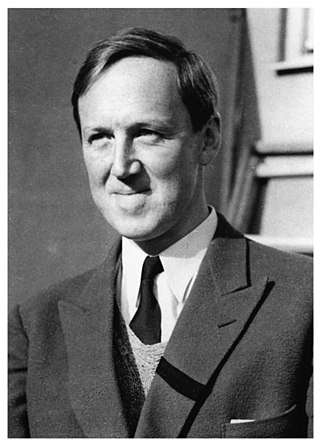
Hannes Olof Gösta Alfvén was a Swedish electrical engineer, plasma physicist and winner of the 1970 Nobel Prize in Physics for his work on magnetohydrodynamics (MHD). He described the class of MHD waves now known as Alfvén waves. He was originally trained as an electrical power engineer and later moved to research and teaching in the fields of plasma physics and electrical engineering. Alfvén made many contributions to plasma physics, including theories describing the behavior of aurorae, the Van Allen radiation belts, the effect of magnetic storms on the Earth's magnetic field, the terrestrial magnetosphere, and the dynamics of plasmas in the Milky Way galaxy.

Plasma cosmology is a non-standard cosmology whose central postulate is that the dynamics of ionized gases and plasmas play important, if not dominant, roles in the physics of the universe at interstellar and intergalactic scales. In contrast, the current observations and models of cosmologists and astrophysicists explain the formation, development, and evolution of large-scale structures as dominated by gravity.
Eric J. Lerner is an American popular science writer and independent plasma researcher. He wrote the 1991 book The Big Bang Never Happened, which advocates Hannes Alfvén's plasma cosmology instead of the Big Bang theory. He is founder, president, and chief scientist of LPP Fusion.

A Birkeland current is a set of electrical currents that flow along geomagnetic field lines connecting the Earth's magnetosphere to the Earth's high latitude ionosphere. In the Earth's magnetosphere, the currents are driven by the solar wind and interplanetary magnetic field and by bulk motions of plasma through the magnetosphere. The strength of the Birkeland currents changes with activity in the magnetosphere. Small scale variations in the upward current sheets accelerate magnetospheric electrons which, when they reach the upper atmosphere, create the Auroras Borealis and Australis.
A dense plasma focus (DPF) is a type of plasma generating system originally developed as a fusion power device starting in the early 1960s. The system demonstrated scaling laws that suggested it would not be useful in the commercial power role, and since the 1980s it has been used primarily as a fusion teaching system, and as a source of neutrons and X-rays.
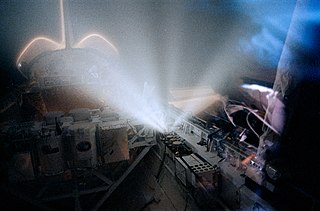
Critical ionization velocity (CIV), or critical velocity (CV), is the relative velocity between a neutral gas and plasma, at which the neutral gas will start to ionize. If more energy is supplied, the velocity of the atoms or molecules will not exceed the critical ionization velocity until the gas becomes almost fully ionized.
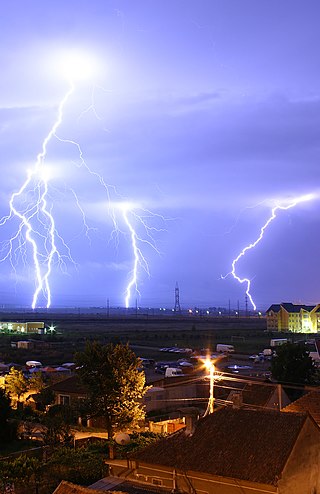
A pinch is the compression of an electrically conducting filament by magnetic forces, or a device that does such. The conductor is usually a plasma, but could also be a solid or liquid metal. Pinches were the first type of device used for experiments in controlled nuclear fusion power.
Per Carlqvist is a Swedish plasma physicist with an interest in astrophysical applications. In 1963, he received the degree of civilingenjör from the Royal Institute of Technology, Stockholm; in 1970, the Tekn. lic.; and in 1980 the Tekn. D.
Carl-Gunne Fälthammar was a Swedish electrical engineer and physicist who was Professor Emeritus of electrical engineering at the Royal Institute of Technology in Stockholm, specialising in space and plasma physics. He succeeded Hannes Alfvén as Professor of Plasma Physics in 1975.
In materials engineering, suspension plasma spray (SPS) is a form of plasma spraying where the ceramic feedstock is dispersed in a liquid suspension before being injected into the plasma jet.
A double layer is a structure in a plasma consisting of two parallel layers of opposite electrical charge. The sheets of charge, which are not necessarily planar, produce localised excursions of electric potential, resulting in a relatively strong electric field between the layers and weaker but more extensive compensating fields outside, which restore the global potential. Ions and electrons within the double layer are accelerated, decelerated, or deflected by the electric field, depending on their direction of motion.
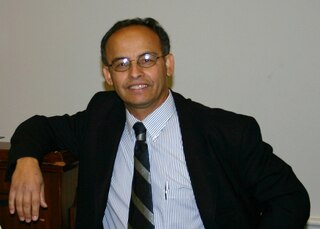
Mounir Laroussi is a Tunisian-American scientist. He is known for his work in plasma science, especially low temperature plasmas and their biomedical applications.
IEEE Transactions on Plasma Science is a peer-reviewed scientific journal published monthly by the IEEE Nuclear and Plasma Sciences Society. The journal covers plasma science and engineering, including but not limited to magnetohydrodynamics, thermionics, space plasma and plasma-wave interactions. Its current editor-in-chief is Steven J. Gitomer, senior research scientist at Los Alamos National Laboratory.
The Drexel Plasma Institute, in Camden, New Jersey, is the largest university-based plasma research facility in the United States. Led by Drexel University, the members of the scientific team are from University of Illinois at Chicago, Argonne National Laboratory, Pacific Northwest National Laboratory and Kurchatov Institute of Atomic Energy. The primary fields of research are applications in medicine, Environmental Control, energy, and agricultural industries. The institute actively develops and researches specific types of plasma discharges such as gliding arc, dielectric barrier discharge, gliding arc tornado, reverse vortex flow, Pulsed Corona Discharge, and many more.

David John McComas is an American space physicist, Vice President for Princeton Plasma Physics Laboratory, and Professor of Astrophysical Sciences and leads the Space Physics at Princeton Group at Princeton University. He had been Assistant Vice President for Space Science and Engineering at the Southwest Research Institute, Adjoint Professor of Physics at the University of Texas at San Antonio (UTSA), and was the founding director of the Center for Space Science and Exploration at Los Alamos National Laboratory. He is noted for his extensive accomplishments in experimental space plasma physics, including leading instruments and missions to study the heliosphere and solar wind: IMAP, IBEX, TWINS, Ulysses/SWOOPS, ACE/SWEPAM, and Parker Solar Probe. He received the National Academy of Science's 2023 Arctowski Medal, European Geosciences Union 2022 Hannes Alfven Medal, SCOSTEP 2022 Distinguished Scientist Award, a NASA Exceptional Public Service Medal in 2015, the 2014 COSPAR Space Science Award, and the American Geophysical Union 1993 Macelwane Medal.
Chandrashekhar Janardan Joshi is an Indian–American experimental plasma physicist. He is known for his pioneering work in plasma-based particle acceleration techniques for which he won the 2006 James Clerk Maxwell Prize for Plasma Physics and the 2023 Hannes Alfvén Prize.

Leopoldo Soto Norambuena, who publishes as Leopoldo Soto, is a Chilean physicist. He works at the Comisión Chilena de Energía Nuclear where he founded the Plasma Physics and Nuclear Fusion Laboratory. His main contributions are in experimental physics.

Edl Schamiloglu is an American physicist, electrical engineer, pulsed power expert, inventor, and distinguished professor in the department of electrical and computer engineering at the University of New Mexico. He has been known in public media for his expertise in the design and operation of directed-energy weapons. He is also known for his assessment on the possible origins of alleged health damages presumably caused on U.S. embassy personnel in Cuba in 2016 as part of the Havana syndrome incident. He is the associate dean for research and innovation at the UNM School of Engineering, where he has been a faculty since 1988, and where he is also special assistant to the provost for laboratory relations. He is also the founding director of the recently launched UNM Directed Energy Center. Schamiloglu is a book author and co-editor, and has received numerous awards for his academic achievements. He is a Fellow of the Institute of Electrical and Electronics Engineers and the American Physical Society.
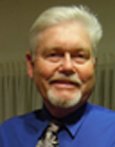
James Nelson Benford is an American physicist, High-Power Microwave (HPM) scientist, book author, science-fiction writer, and entrepreneur, best known for introducing novel technological concepts and conjectures related to the exploration of outer space, among these the design of laser-driven sailships, the possible use of co-orbital objects by alien probes to spy on earth, and the appraisal of technical and safety issues associated with the Search for Extraterrestrial Intelligence (SETI). He was born in Mobile, Alabama in 1941, as was his twin brother, science-fiction author Greg Benford. He has two children, the eldest being Dominic Benford, an astrophysicist and the Program Scientist for the Nancy Grace Roman Space Telescope.